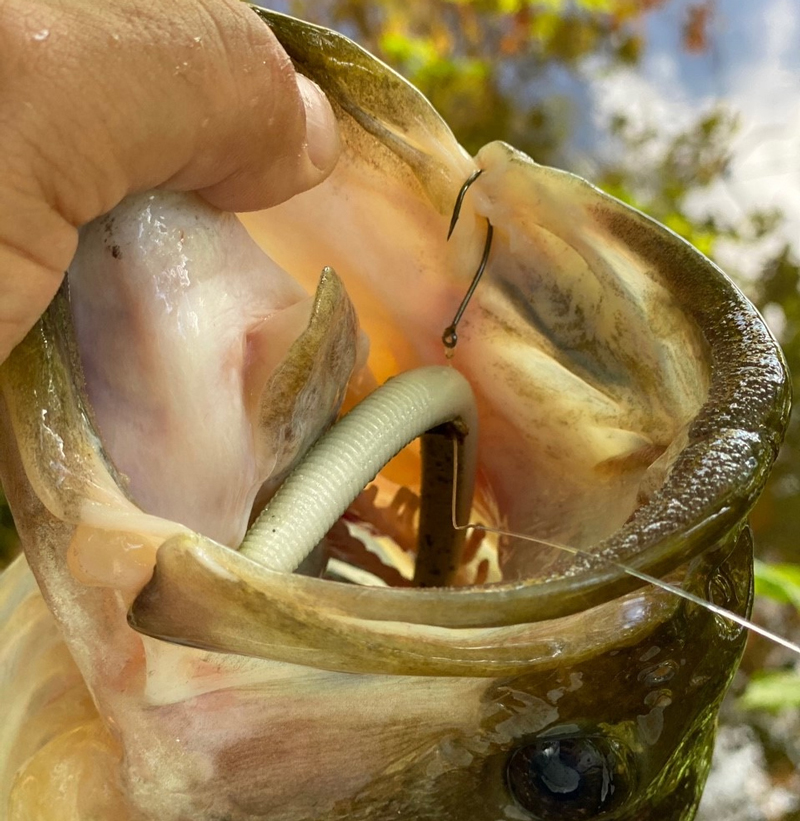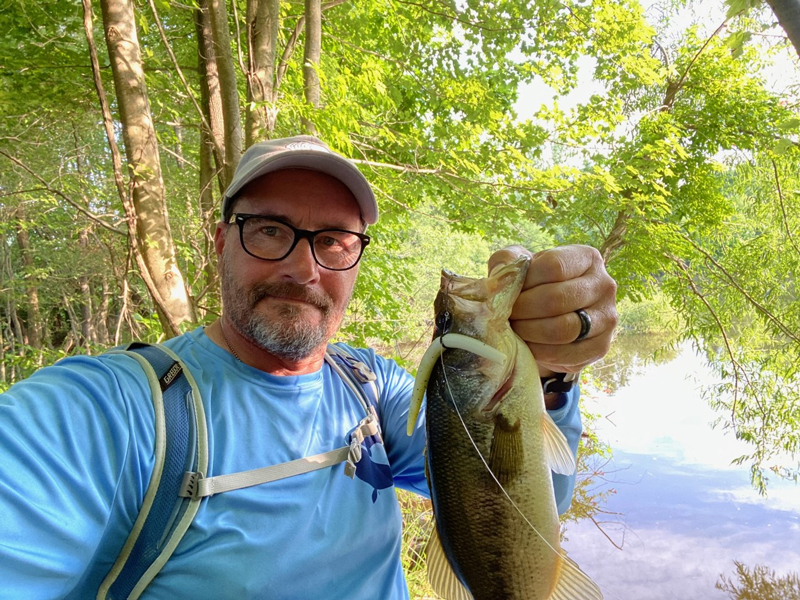Some types of rigging can get complex and thus may seem a bit overwhelming at times, but you can catch just about every sporting species with some very simple, basic rigs - and when it comes to catching largemouth bass, few rigs are as simple — or as effective — as the wacky worm.

What is a Wacky Worm
The term wacky worm refers to the rigging method as opposed to the worm itself, and can be used on just about any plastic worm. It’s uber-easy to set up: simply tie a hook on the end of your line, slide the hook point through the middle of a plastic worm so the worm hangs down in more or less an upside-down U shape, and… and… and… well, that’s about it.
Seasoned wacky worm users will generally opt for a relatively wide gap hook, sometimes an octopus style and often weedless when fished in heavy cover, in the 1/0 to 2/0 size range. Many will also add a few feet of leader to their mainline when fishing near abrasive structure or thick vegetation. Advanced anglers sometimes opt to place a rubber O-ring over the worm and then slide the hook through the O-ring. The idea is to prevent the hook from tearing through the worm, though you probably won’t notice much of a difference unless the bite is hot and the plastic worms are taking a real beating.
How to Fish a Wacky Worm
With a wacky worm rigged up and ready to roll, cast out to your target zone and allow it to sink naturally under its own weight. The appeal of this rig is the way each side of the worm wiggles and waves as it sinks, and the vast majority of the time the worm will be sinking when the strikes come.
If the worm reaches bottom without being attacked, lift your rod tip to bring the lure back up well off the bottom, then drop the rod tip and allow it to sink again. Continue working it this way until the retrieve is complete, or you decide it’s time to reel it up and take a new cast to get that worm back into the target zone. Remember, the strikes will almost always come as the worm sinks.
For most anglers, the toughest part of fishing a wacky worm is detecting the strike and knowing when to set the hook. As the worm falls you may feel nothing more than a slight bump or tick. No matter how subtle this may seem, immediately swing that tip and set the hook. At other times you may not feel a thing, but instead, you’ll see your fishing line unexpectedly speed up or suddenly stop. Again, swing for the stars. Any sudden change in the sink-rate of the worm should be taken as an indication of a bite.
When and Where to Fish a Wacky Worm
This rig isn’t great for prospecting wide areas of open water, because it takes a long time to complete each cast and it covers a limited area. So if you’re searching for fish scattered along a large weedbed, prospecting a broad underwater point, or fishing new waters that don’t have visible cover, it probably won’t be the best choice.
The wacky worm shines, however, when you have very specific spots to target. When you’re looking at a shoreline with some dead trees laying into the water — obvious potential bass abodes — this is an excellent rig to employ.

Speaking of targeting structure: if your initial cast is off the mark or you’ve worked the worm away from the specific spot you believe bass may be located, it’s usually best to just crank it in and try a new cast. Fishing a wacky worm makes for a slow retrieve, and in most cases, if you make a good cast close to the target, a fish is in the zone, and it’s willing to eat, the bite will come as the worm sinks down from the initial cast.
Choosing the Best Wacky Worm
So, should you use a green worm, or a pink one? Should it be five inches long, or would a seven-incher be better? This is where different anglers will all have their own personal favorites. That said, relatively dull colors like pumpkinseed green or natural worm brown often work better than anything else. As a rule, however, you should experiment a bit with different colors and sizes when you’re hitting spots that look good but you aren’t getting any bites.
Does the wacky worm sound too simple to be true? Maybe so. But rig one up and give it a try, because there’s one truth experienced anglers know for sure: wacky worms work.